Copyright Andrew Allentuck and Benoit Poliquin, 2018
All rights reserved. No part of this publication may be reproduced, stored in a retrieval system, or transmitted in any form or by any means, electronic, mechanical, photocopying, recording, or otherwise (except for brief passages for purpose of review) without the prior permission of Dundurn Press. Permission to photocopy should be requested from Access Copyright.
Cover image: istock.com/Lesikvit
Printer: Webcom, a division of Marquis Book Printing Inc.
Library and Archives Canada Cataloguing in Publication
Allentuck, Andrew, 1943-, author
Cherished fortune : make your wealth your business
/ Andrew Allentuck, Benoit Poliquin.
Includes bibliographical references and index.
Issued in print and electronic formats.
ISBN 978-1-4597-4240-6 (softcover).--ISBN 978-1-4597-4241-3
(PDF).--ISBN 978-1-4597-4242-0 (EPUB)
1. Investments. 2. Portfolio management. I. Poliquin,Benoit, author II. Title.
| HG4521.A44 2018 | 332.6 | C2018-904223-0 |
| C2018-904224-9 |
1 2 3 4 5 22 21 20 19 18
We acknowledge the support of the Canada Council for the Arts, which last year invested $153 million to bring the arts to Canadians throughout the country, and the Ontario Arts Council for our publishing program. We also acknowledge the financial support of the Government of Ontario, through the Ontario Book Publishing Tax Credit and the Ontario Media Development Corporation, and the Government of Canada.
Nous remercions le Conseil des arts du Canada de son soutien. Lan dernier, le Conseil a investi 153 millions de dollars pour mettre de lart dans la vie des Canadiennes et des Canadiens de tout le pays.
Care has been taken to trace the ownership of copyright material used in this book. The author and the publisher welcome any information enabling them to rectify any references or credits in subsequent editions.
J. Kirk Howard, President
The publisher is not responsible for websites or their content unless they are owned by the publisher.
Printed and bound in Canada.
VISIT US AT
 dundurn.com
dundurn.com
 @dundurnpress
@dundurnpress
 dundurnpress
dundurnpress
 dundurnpress
dundurnpress
Dundurn
3 Church Street, Suite 500
Toronto, Ontario, Canada
M5E 1M2
TABLE OF CONTENTS
PREFACE
We have written Cherished Fortune: Make Your Wealth Your Business in the belief that most instructional books on investment needlessly complicate the process. From the inspirational work The Wealthy Barber to the seminal works in financial analysis starting with Graham and Dodds Security Analysis, the process has been variously turned into a form of self-belief, which is the common currency of inspirational investment books, and in varying levels of complexity, manuals on computation. Most of these works view investing in financial assets and real estate as an abstraction distant from daily life. Some of the work published in academic journals needs the skills of a mathematician to decipher. Directness and clarity have been lost.
We take a different view, that buying stocks and bonds, real estate, and other at-risk assets is not so different from what a person does running his or her own small business. It is a matter of understanding what you have to offer, the assets and knowledge, the cost of inventory for sale, the liabilities, the money coming in and going out that is, the income statement and the tax implications of the business done. From this perspective, a portfolio of assets is a small business that one can run with intimate knowledge of its parts. Its like a corner store, if you accept the analogy.
The idea that investment analysis must be a cats cradle of numerical analysis has developed from professions that profit from complexity. For regulatory reasons and from the wish to satisfy accounting standards, the quarterly and annual reports of public companies run to scores or hundreds of pages of income composition, changes in assets and liabilities, legal risk, accounting system reconciliation, and footnotes to support all of this. Each division of a large company reports in much the same depth. The disclosures satisfy regulations, but whether they add to understanding or even can be understood is quite another matter.
We approach this complexity with both comprehension of what the numbers are about, for Andrew Allentuck is by training an economist with decades of experience reading and writing long equations, and Benoit Poliquin is a chartered financial analyst who reads and writes the language of accounting with its long tails of numbers and investigations into income statements and balance sheets of potential investments.
We think that the basic question for any investor who proposes to invest in the shares of a company they do not run and cannot control, and for which their only power is that to elect directors, is intellectual. Specifically, the would-be investor should ask the most basic question of all: How do these guys make their money? That is the foundation of investment analysis, and it is also the most sensible first question. The problem of understanding is fundamental, for when you buy into somebody elses business by taking on either its debt via a bond or its ownership via stock, or even by buying a parcel of land with or without a building on it, the seller knows a lot more about the asset than you do. The situation has a name, information asymmetry, and the solutions are variously in the realms of accounting and fancy equations or, what we prefer, direct and simple common sense. We want to get past the myths and down to the works of the assets one wishes to buy or, if profits are realized or losses threaten or may worsen, to sell.
It leads to looking at sales and costs, then to the difference, which is profit. Where there are long times between investment and realization of income for example, in such capital-intensive industries as making electric power or connecting telephones through costly networks return on money invested in the business is critical. Competition comes into all this, of course, for if another company has a better mousetrap, the firm in questions sales may be compromised.
The paradigm of Cherished Fortune is to invest as you would in your own small business, with a tactile feel for every asset. Know what you have, and expand your portfolio as your knowledge of markets and assets grows. Do not abdicate to others or to concepts like the dot-coms or, more recently, the BRICs (Brazil, Russia, India, China), which have of late turned into a flopped concept, for Brazil is in financial disarray and Russias economy is a mess of rising mortality and dependence on the price of hydrocarbon exports. The essence of the book is to advance the idea of investing with what you know, not what others say. It is a simple idea, yet rarely advocated and less often followed. We have organized

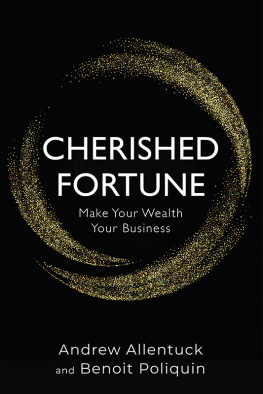


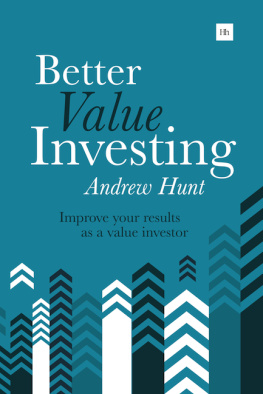

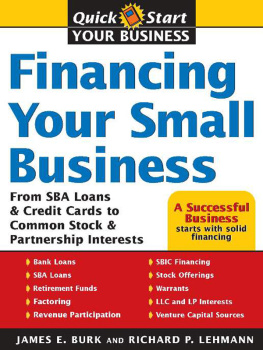
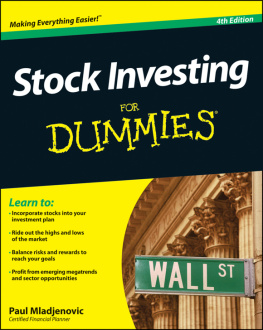
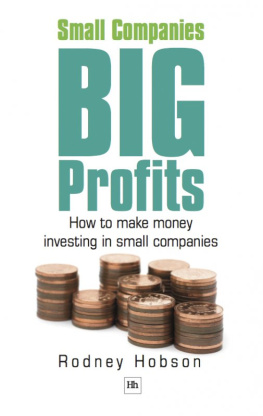
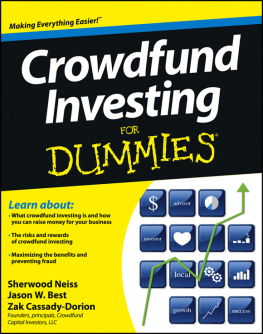




 dundurn.com
dundurn.com @dundurnpress
@dundurnpress dundurnpress
dundurnpress dundurnpress
dundurnpress